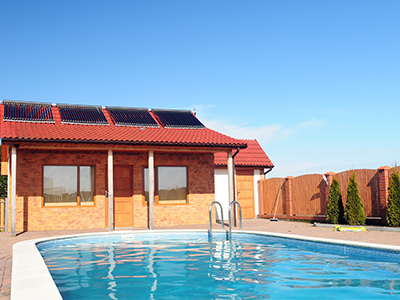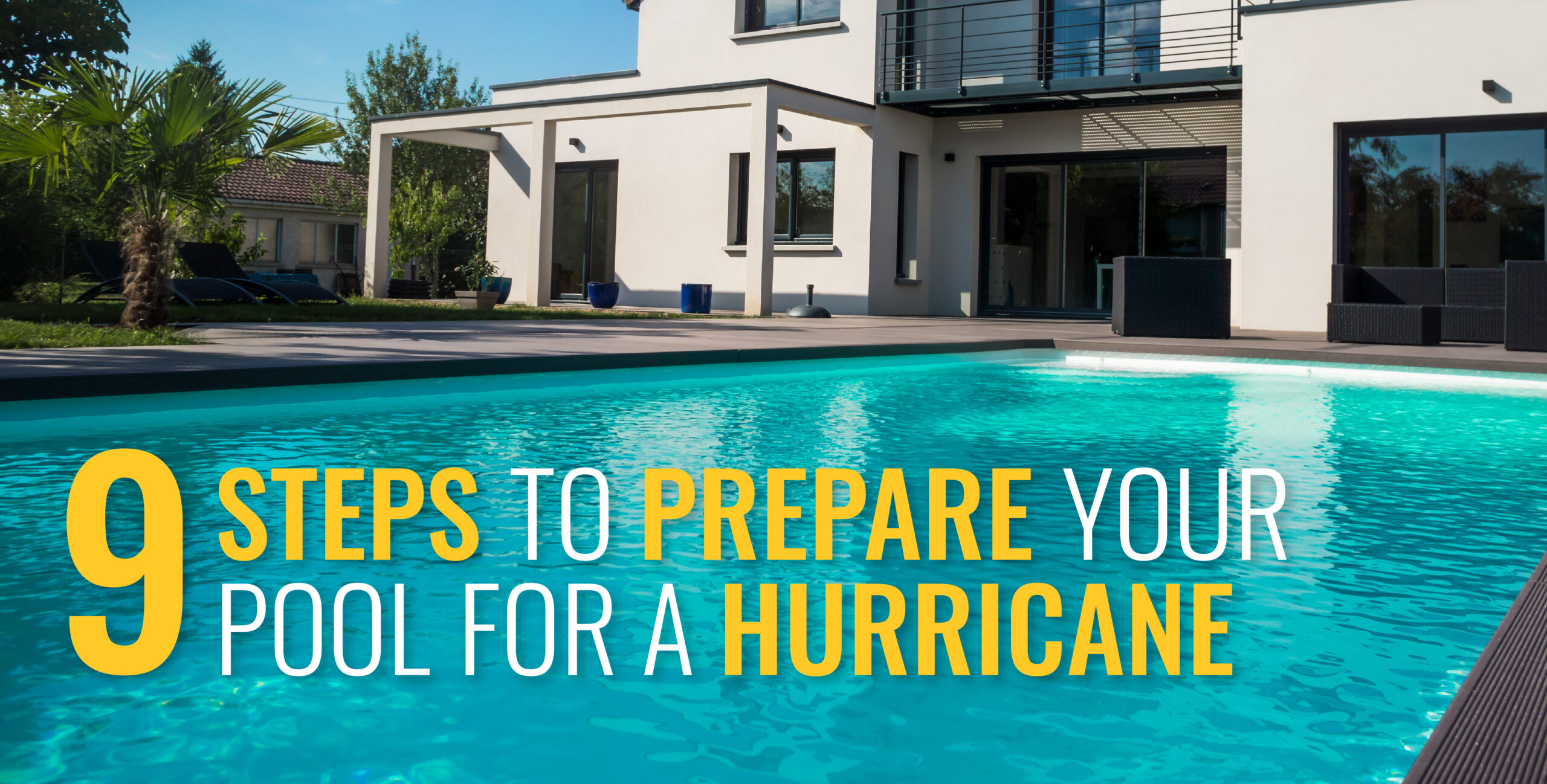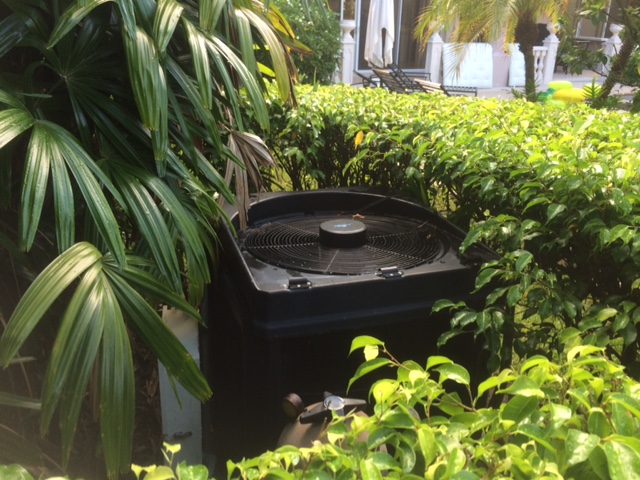As hurricane season approaches, it's crucial to ensure the safety of your property, including your…

Going Green: Using a Swimming Pool Heat Pump with Solar Technology
Given both recent technological advances and increased environmental awareness, more swimming pool owners are benefiting from renewable energy now than ever before. Many swimming pools now feature not only one, but two energy-efficient heating systems. In this article, we discuss how you can benefit from energy efficiency and lower operating costs through swimming pool heat pumps and solar heaters.
Heat pumps and solar heaters complement each other very well because they utilize different forms of renewable energy. Conditions that render one heating system inefficient have no effect on the other. Furthermore, in conditions favorable to both heating systems, the systems assist each other in heating your swimming pool.
Energy Efficiency
As we have mentioned in other articles, an air-source heat pump depends on air temperature because it transfers heat from the air to your swimming pool. Air-source heat pumps work very well when average air temperatures exceed 50°F (10°C). They work less efficiently in air temperatures below 50°F (10°C), however, and they stop altogether in freezing temperatures. A solar heater, on the other hand, depends on sunlight, because it transfers heat from the suns rays to your swimming pool. Solar heaters therefore operate very efficiently in sunny weather. They work less efficiently in cloudy weather, however, and cannot operate at night.
By utilizing both a solar heater and a heat pump in your circulation system, you can heat your swimming pool in almost all weather conditions and thereby significantly extend your swimming pool season.
Operating Costs
When you install a solar heater to your existing circulation system, you place it after your filter and in parallel flow with your heat pump. Your swimming pool water will exit your swimming pool through the skimmer and main drains. It will travel through your pump, filter, and either your solar heater or heat pump (or both), and then your chlorinator. Your swimming pool water will then return to your swimming pool through the return lines.
By heating your swimming pool water twice during one circulation cycle, you reduce your swimming pools heating time, which will allow you to enjoy your swimming pool for longer periods of time. Furthermore, you place less stress on your heat pump, which will reduce your swimming pool heating costs. For more tips on reducing your swimming pool heating costs, click here.
Hopefully this article motivates you to bring energy efficiency to your swimming pool. For more information on energy efficiency, you can read our article entitled Going Green: A Guide to Energy-Efficient Swimming Pool Heating. If you have any questions or thoughts, leave a comment below! We at AquaCal would love to hear from you.




Are you shipping overseas?
Hi Ram,
Yes. We have an international division that ships overseas. You can reach them at 954-772-6966.
Thanks,
Mark
AquaCal/AutoPilot
My home is in Scottsdale. My pool now has both a gas heater and solar panels, but I am thinking of adding a heat pump. How should the heat pump be connected. Should I split the line that brings water from the pool into 2 lines and feed one into the solar heater and one into the heat pump, then discharge the water from both heaters back into the pool. That way the water entering each heat source will be the ambient temperature of the pool. I call this the parallel connection. Or should I run the water from the pool into the solar heater 1st, then take the output from the solar and feed it into the heat pump. That way the water entering the heat pump will be warmer than the ambient temperature of the pool, by the amount the solar system increased the temperature of the water after flowing through it. I call this the series connection.
In other words, is the heat pump more efficient when it has colder or hotter water at the input.
Which of the two types of connections will be more efficient and heat the pool faster?
From the little I remember from my university thermodynamics, I believe that the efficiency of any system is the highest when the temperature differential between the low and high temperatures are at the maximum possible. That would suggest the parallel connection.
Thanks for your reply.
Hello Douglas,
Whenever you have a solar heater and a heat pump, you want to plumb them in parallel. You will either use the solar to heat the pool or the heat pump. You would not want them in series, where the warm water from the solar heater is going through the heat pump.
If you have any questions, please call us at 727-823-5642.
Thanks,
It’s interesting to learn that air-source pool heat pumps work well in average air temperatures. My wife and I are moving into a new home with a pool soon and we were wondering what kind of heat pump we should get. I’ll be sure to tell her that we should consider getting an air-source heat pump for our pool.
Solar panels saved me a lot of money on heating my pool. Now i recommend it to all my friends (because all my neighbours are already on board:)).
My husband and I recently bought a swimming pool and we are trying to decide which type of heater we should buy, so I am glad that I found this article! You make a great point that solar panel heaters are energy efficient and work well in sunny weather. This energy-efficiency would save us money on operating costs and would make getting a solar heater cost-effective. I will make sure to share this information with my husband!
Good Morning Mrs. Beckett,
Hope you are doing well. i am glad that the information proved useful.
If you have any questions about our heaters working in conjunction with solar panels, please feel free to call us at 727-823-5642.
Thanks
Robert Brown
Customer & Technical Support
Excellent post. Thank you for taking the time posting this very helpful information!. I discovered so many interesting things inside your blog
Thank you for your comment Rafik!
We are glad you were able to discover new information regarding our products, we post new content often, so keep checking us out!
Very interesting post, saved your site for hopes to read more !!
Thank you very much! We will do our best to answer any questions you may have. Please feel to send us any questions you would like answered and we will blog about it!
Swimming pools provide a great way to exercise and beat the summer heat. Controlling the temperature of water is essential to ensure the pleasure of swimming and a heat pump is an ideal way to provide all year round economical heating for indoor swimming pools. This may be as a standalone or in conjunction with solar heating.
Thank you for your comment Calmet.
Facts and other points given here are quite considerable and to the point as well, would be better to follow them out.